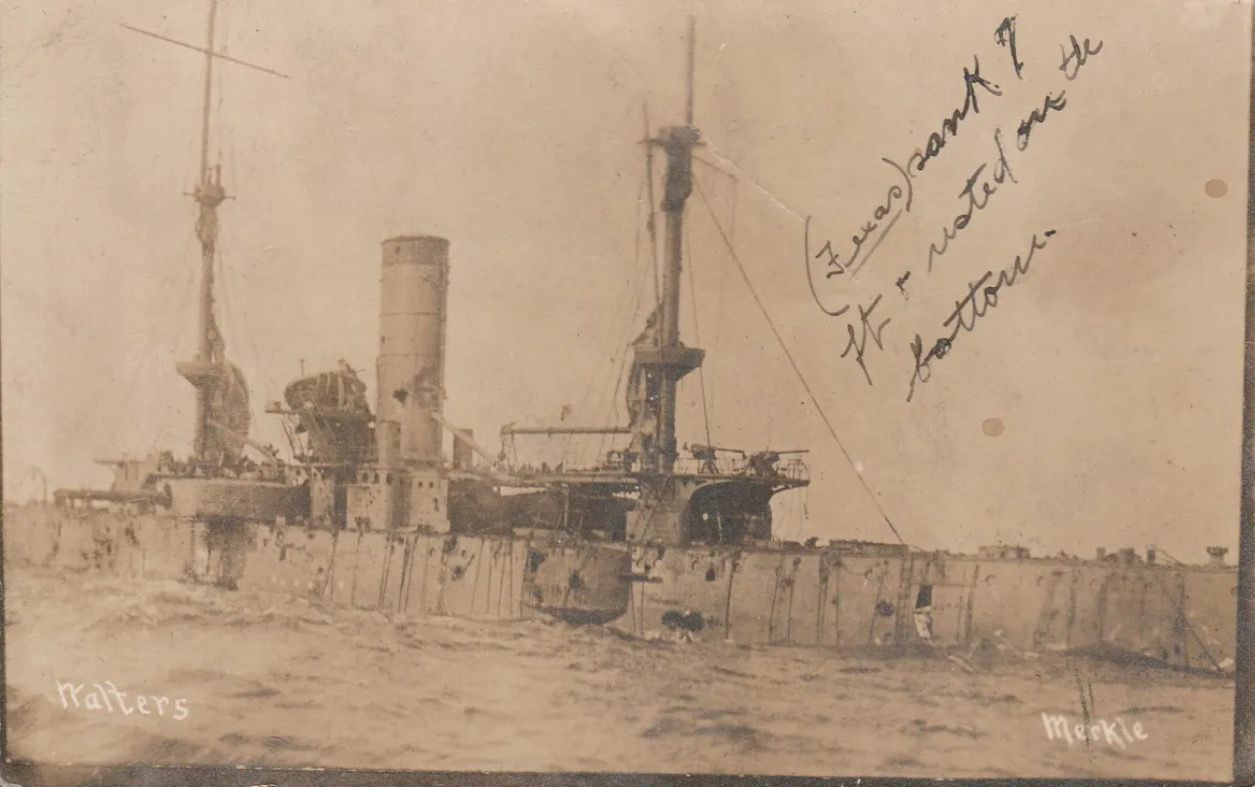Name/Title
USS Texas (1892) [Real Photo Postcard]Context
Early on, the Texas earned a reputation as a jinxed ship and the nickname “Old Hoodoo.” Her hull was found to be weak and required additional reinforcement and thicker bottom plating beneath her engines. Further, a burst pipe caused her to sink at her New York Navy Yard mooring. To free the name for a new battleship Texas (BB-35), she was renamed the San Marcos on 3 February 1911.
During the subsequent 34-day period, the battleship proved her worth. In March 1911, she was anchored in shallow Chesapeake Bay waters near Tangier Island, Virginia. There she was shelled by the battleship New Hampshire (Battleship No. 25) and sank in 30 feet of water on 22 March.
Lieutenant R. S. Edwards wrote for the U.S. Naval Institute’s Proceedings in 1917, “The [all-or-nothing] scheme of protection is based on the data furnished by the firing at the San Marcos.” This protection relied on very heavy armor on the waterline and other sensitive points and dispensed with thin topside and secondary-battery armor. All U.S. battleships after the Nevada (BB-36)—the first laid down after the San Marcos tests—were so designed.
In 1938, Lieutenant Commander Radford Moses, one of about 200 officers to inspect the ship before and during the tests, recollected them for Proceedings:
“We fired a few minutes and then inspected her again to obtain the first data. We continued firing for three days as the San Marcos rested easily in the mud, examining her frequently and conducting various trials and tests. At the end of the third day we were all deaf even though wearing ear protectors and usually cotton in addition. . . .”
The San Marcos was stricken from the Navy Register on 11 October 1911 but continued to be used as a static target through the end of World War II. In 1959, much of her remaining upper works were destroyed and the remainder pushed down into the mud of the Chesapeake Bay. As Lieutenant Commander Moses aptly noted, “It is even possible that the old Texas did more for naval progress in those 3 days than in the previous 16 years!”
